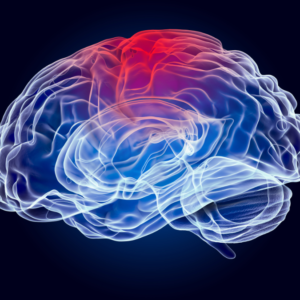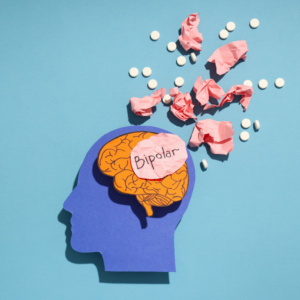Living with bipolar disorder can be a rollercoaster ride, with unpredictable mood swings that can disrupt your daily life. Fortunately, there are treatment options available that can help manage the symptoms and provide stability. One of the most important aspects of managing bipolar disorder is medication. Medication plays a crucial role in controlling the highs and lows of the disorder, allowing individuals to live a more balanced and fulfilling life.

The importance of medication in managing bipolar disorder
Bipolar disorder is a complex psychiatric condition that affects millions of people worldwide. It is characterized by extreme mood swings, ranging from manic episodes of elevated mood, energy, and activity, to depressive episodes of sadness, lethargy, and hopelessness. Managing these mood swings is essential for individuals with bipolar disorder to lead a stable life.
Medication is a cornerstone of bipolar disorder treatment. It helps to stabilize mood, reduce the frequency and severity of episodes, and prevent relapse. By regulating the levels of neurotransmitters in the brain, such as serotonin and dopamine, medication can help control the symptoms of bipolar disorder and improve overall well-being.
Commonly prescribed bipolar medication names
There are several medications commonly prescribed to individuals with this disorder. These medications aim to stabilize mood, prevent episodes, and manage symptoms. Some of the commonly prescribed bipolar medication names include:
- Lithium: Lithium has been used for decades as a first-line treatment for this disorder. It helps to reduce the frequency and severity of manic episodes and can also be effective in preventing depressive episodes.
- Anticonvulsants: Medications such as valproate and carbamazepine are often prescribed to individuals with this disorder. These anticonvulsants can help stabilize mood and prevent manic episodes.
- Atypical antipsychotics: Drugs like quetiapine, olanzapine, and risperidone are commonly prescribed to manage this disorder symptoms. They can help control both manic and depressive episodes.
- Antidepressants: In some cases, antidepressants may be prescribed to individuals with this disorder experiencing depressive episodes. However, they are usually used in combination with a mood stabilizer to prevent manic episodes triggered by the antidepressant.
Exploring the effectiveness of bipolar medication in controlling symptoms

The effectiveness of bipolar medication in controlling symptoms varies from person to person. It’s important to work closely with a healthcare professional to find the right medication and dosage that works best for you. Medication alone may not be sufficient to manage this disorder, and it is often used in combination with therapy and lifestyle changes.
When taken as prescribed, bipolar medication can help stabilize mood, reduce the frequency and severity of episodes, and improve overall quality of life. However, it’s important to note that medication is not a cure for this disorder. It helps manage the symptoms and provides stability, but ongoing treatment and management are necessary for long-term success.
Bipolar II disorder medication options and considerations

Bipolar II disorder is a subtype of bipolar disorder characterized by recurrent depressive episodes and hypomanic episodes, which are less severe than full-blown manic episodes. The treatment approach for bipolar II disorder may differ from bipolar I disorder.
Medication options for bipolar II disorder may include mood stabilizers such as lithium or anticonvulsants like lamotrigine. These medications aim to prevent depressive and hypomanic episodes and provide stability. However, the choice of medication will depend on factors such as individual response, side effects, and potential drug interactions.
It’s important to discuss the potential risks and benefits of medication options with your healthcare professional, as well as any concerns or questions you may have. They will work with you to find the most suitable medication regimen for your specific needs.
What happens if you take bipolar medicine and you’re not bipolar?
It is crucial to note that bipolar medication is specifically designed for individuals with bipolar disorder. If you take bipolar medication and you’re not diagnosed with this disorder, it can have adverse effects on your mental health. Each medication is prescribed based on the specific needs and symptoms of this disorder, and taking it without a proper diagnosis and supervision can lead to unpredictable outcomes.
If you suspect you may have this disorder, it is essential to consult a healthcare professional for an accurate diagnosis. They will evaluate your symptoms, medical history, and conduct any necessary assessments to determine the appropriate treatment plan for you. Self-diagnosis and self-medication can be dangerous and may exacerbate existing mental health conditions.
New treatments for bipolar disorder in 2022
The field of psychiatry is constantly evolving, and researchers are continuously exploring new treatment options for this disorder. In 2022, there have been advancements in the development of new treatments that hold promise for individuals living with bipolar disorder.
One area of research focuses on the use of novel medications that target specific neurotransmitters or pathways in the brain. These medications aim to provide more targeted and effective treatment options for this disorder, with potentially fewer side effects.
Additionally, non-pharmacological interventions such as transcranial magnetic stimulation (TMS) and deep brain stimulation (DBS) are being investigated as potential treatment options for this disorder. These interventions involve the use of magnetic fields or electrical stimulation to modulate brain activity and regulate mood.
While these new treatments show promise, it’s important to note that further research is needed to determine their safety and efficacy. It’s always best to consult with a healthcare professional to stay updated on the latest treatment options and discuss what may be suitable for you.
Bipolar disorder statistics in 2022: prevalence and treatment rates

Understanding the prevalence and treatment rates of bipolar disorder can provide insight into the impact of the condition and the resources available for individuals living with it. In 2022, bipolar disorder continues to be a significant mental health concern worldwide.
According to the World Health Organization (WHO), bipolar disorder affects approximately 2.4% of the global population. The disorder can occur at any age, with the average age of onset being the late teens or early adulthood. This disorder can have a profound impact on individuals’ lives, affecting their relationships, work, and overall well-being.
Treatment rates for this disorder vary across countries and regions. While some individuals receive appropriate care and treatment, many others may face barriers such as limited access to healthcare, stigma, or lack of awareness. It is crucial to promote mental health education, reduce stigma, and improve access to quality care for individuals with this disorder.
First-line treatment for bipolar II disorder: guidelines and recommendations
First-line treatment refers to the initial course of treatment recommended for a particular condition. For bipolar II disorder, the first-line treatment options may differ from those for bipolar I disorder due to the differences in symptomatology.
According to the Canadian Network for Mood and Anxiety Treatments (CANMAT) guidelines, the first-line treatment for bipolar II disorder typically involves mood stabilizers such as lithium or anticonvulsants like lamotrigine. These medications aim to provide stability, prevent depressive and hypomanic episodes, and help individuals maintain a balanced mood.
In addition to medication, psychotherapy, such as cognitive-behavioral therapy (CBT), can be an integral part of the treatment plan for bipolar II disorder. Psychotherapy can help individuals develop coping strategies, manage stress, and improve overall emotional well-being.
It’s important to note that treatment plans should be individualized, and the choice of first-line treatment may vary depending on factors such as symptom severity, treatment response, and individual preferences. Consulting with a healthcare professional experienced in treating this disorder can help guide treatment decisions.
Managing bipolar disorder: medication, therapy, and lifestyle factors
Managing bipolar disorder requires a comprehensive approach that includes medication, therapy, and lifestyle factors. While medication plays a vital role in stabilizing mood and preventing episodes, it is not the sole component of treatment.
Therapy, such as v (CBT) or interpersonal therapy (IPT), can be beneficial for individuals with bipolar disorder. Therapy can help individuals develop coping mechanisms, manage stress, improve communication and relationships, and address any underlying issues that may contribute to the disorder.
Lifestyle factors also play a crucial role in managing this disorder. Maintaining a regular sleep schedule, engaging in regular exercise, practicing stress management techniques, and adopting a healthy diet can all contribute to overall well-being and symptom management.
It’s important to work closely with a healthcare professional to develop a personalized treatment plan that addresses medication, therapy, and lifestyle factors. Regular communication and monitoring of symptoms can help ensure that the treatment plan remains effective and adjustments can be made as needed.
Mental exercises for managing bipolar disorder symptoms
In addition to medication, therapy, and lifestyle factors, mental exercises can be beneficial for managing bipolar disorder symptoms. These exercises aim to promote self-awareness, emotional regulation, and overall mental well-being. Here are a few mental exercises that may be helpful:
- Mindfulness meditation: Mindfulness meditation involves focusing your attention on the present moment, without judgment. It can help reduce stress, improve emotional regulation, and enhance overall well-being.
- Journaling: Keeping a journal can be a helpful tool for individuals with bipolar disorder. Writing down thoughts, feelings, and experiences can provide insight into mood patterns, triggers, and coping strategies. It can also serve as a form of self-expression and emotional release.
- Breathing exercises: Deep breathing exercises can help reduce anxiety and promote relaxation. Taking slow, deep breaths and focusing on your breath can help calm the mind and body during times of stress or heightened emotions.
- Cognitive exercises: Cognitive exercises involve challenging negative or distorted thoughts and replacing them with more positive and realistic ones. This can help individuals with this disorder develop a more balanced perspective and improve their overall mental well-being.
Bipolar disorder treatment guidelines: insights from CANMAT
The Canadian Network for Mood and Anxiety Treatments (CANMAT) provides evidence-based guidelines for the treatment of bipolar disorder. These guidelines serve as a valuable resource for healthcare professionals and can help guide treatment decisions.
The CANMAT bipolar disorder treatment guidelines highlight the importance of individualized treatment plans and a comprehensive approach to managing the disorder. The guidelines emphasize the use of mood stabilizers, such as lithium or anticonvulsants, as the first-line treatment for both bipolar I and bipolar II disorder.
The guidelines also recommend the incorporation of psychotherapy, such as cognitive-behavioral therapy (CBT), as an adjunct to medication treatment. Therapy can help individuals develop coping strategies, improve emotional regulation, and address any underlying issues that may contribute to the disorder.
Regular monitoring and communication with a healthcare professional are essential to ensure that the treatment plan remains effective and adjustments can be made as needed. Following the CANMAT guidelines can help healthcare professionals provide evidence-based care and improve patient outcomes.
How to find the right first-line treatment for bipolar disorder
Finding the right first-line treatment for this disorder is crucial for effectively managing the condition. It requires a collaborative approach between the individual and their healthcare professional. Here are some steps to help guide the process:
- Consultation with a healthcare professional: Schedule an appointment with a healthcare professional experienced in treating this disorder. They will evaluate your symptoms, medical history, and any previous treatment experiences to determine the most suitable first-line treatment options for you.
- Open and honest communication: Be open and honest with your healthcare professional about your symptoms, concerns, and treatment preferences. This will help ensure that the treatment plan aligns with your individual needs and goals.
- Consideration of individual factors: Factors such as age, gender, medical history, potential side effects, and lifestyle considerations should be taken into account when choosing a first-line treatment. It’s important to find a treatment that fits well with your unique circumstances.
- Regular monitoring and adjustment: Once a treatment plan is initiated, it’s crucial to have regular follow-up appointments with your healthcare professional. This allows for ongoing monitoring of symptoms and treatment response, and adjustments can be made as needed.
Finding the right first-line treatment for this disorder may require some trial and error. It’s important to have patience and trust the process. With the guidance of a healthcare professional, you can work towards finding a treatment plan that provides stability and improves your quality of life.
Conclusion: the power of medication in controlling the rollercoaster of living with bipolar disorder
Living with bipolar disorder can feel like being on a rollercoaster, with unpredictable mood swings that can disrupt your life. However, medication can be a powerful tool in controlling the highs and lows of this disorder and providing stability.
Understanding bipolar disorder and its treatment options is essential for individuals living with the condition. Medication, along with therapy and lifestyle factors, plays a crucial role in managing bipolar disorder and preventing relapses.
By following the treatment guidelines, consulting with a healthcare professional, and actively participating in your treatment plan, you can gain control over the rollercoaster of this disorder and live a more balanced and fulfilling life.
Remember, you are not alone in this journey. Reach out for support, stay informed, and advocate for your mental health. With the right medication and comprehensive treatment approach, you can navigate the challenges of this disorder and thrive.
Do follow Education Infinite for more interesting content.